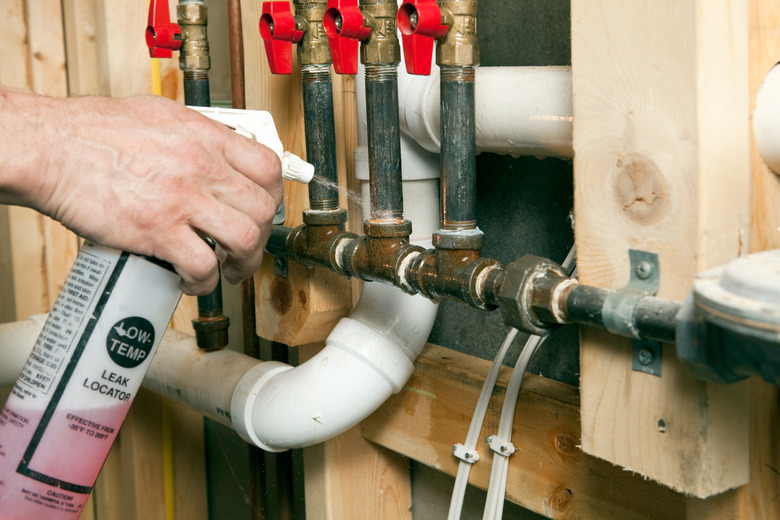How To Make A Leak Detector Solution
We may receive a commission on purchases made from links.
A good leak detector has multiple uses around the home, whether to identify a problem with a slow-leaking tire or to find that pinhole in an inflatable pool toy. One important use is to check the hoses of propane connections for the BBQ grill or any other gas appliance. After changing the tank, it's a good idea to check for propane leaks before they can make a great day for a cookout into a bad day.
Professionals use electronic leak detectors and even solutions that are nothing more than soapy water. The soapy water mix has always been the go-to for most professionals.
Making a Leak-Detection Solution
Making a Leak-Detection Solution
The solution is as simple as a good dish detergent and plain old water. It is best to mix a good amount of soap with the water. Most recipes call for a 50-50 mix. The key to a good mix is a consistency that provides stable bubble retention. Some leak-detection recipes call for the addition of glycerin to help with bubble retention, especially in windy conditions.
This solution is safe and nontoxic, but take the time to thoroughly rinse all soap off that slippery inflatable pool toy before using it.
Warning
When attempting to find leaks in gas equipment, never use an open flame.
Application of the Solution
Application of the Solution
Once you have mixed your leak-detection solution, the applications can vary. The best method and one that is used for large and small areas is to put the solution into a spray bottle or even a small pump sprayer, spray the solution on the area of interest, and watch for bubbles to arise from the leak. This method is effective for tires, inflatable toys, and even gas grill connections.
If you don't have a spray bottle or pump sprayer available, you can use a bowl. The size of the bowl will depend on how much leak-detection solution is necessary for your leak. To apply the solution, use a soaked cotton ball or sponge and dab in the areas of interest. Some commercial detection solutions come in either a spray bottle or a bottle with a dabber built into the cap.
Determining the Size of the Leak
Determining the Size of the Leak
The rate at which the bubbles form is a direct reflection of the size of the leak. A minor leak will produce a small number of bubbles in a minute or two. A large leak will produce a large number of bubbles very quickly. A larger leak may be heard or even felt.
Other Leak-Detection Devices
Other Leak-Detection Devices
Professionals may use a range of leak-detection devices, ensuring the right tool for the job. Electronic leak-detecting devices are specific to the type of leak. For instance, a gas leak detector can pick up on most combustible gasses. HVAC professionals use a refrigerant leak detector to determine leaks. Some professionals specialize in leak detection in specific situations, like underground water-supply and pool piping. For instance, ultrasonic leak detectors allow you to listen for leaks.
